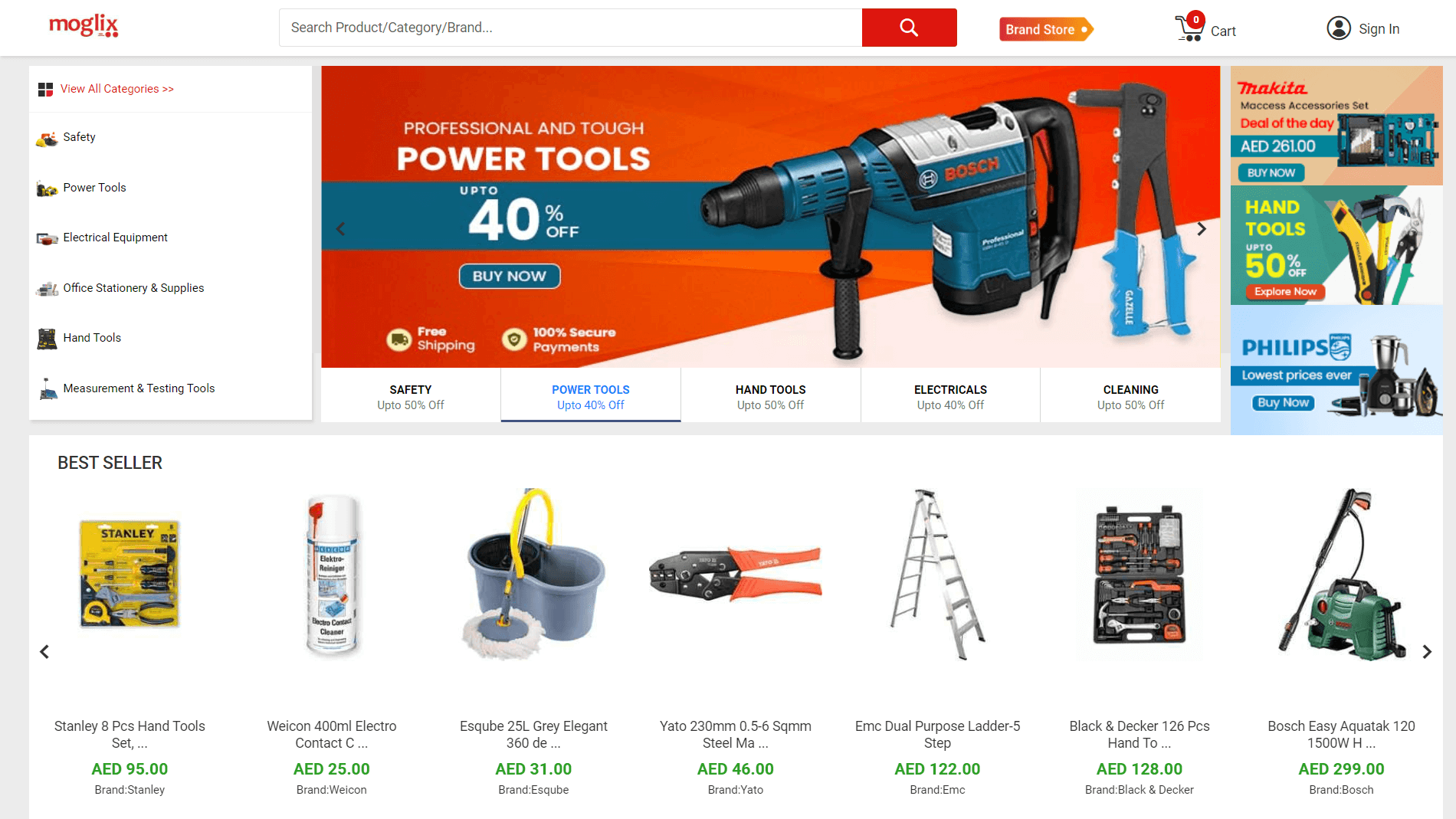Challenges faced by e-commerce

Challenges faced by e-commerce
E-commerce is growing at an unprecedented pace in the UAE, as more consumers are turning to online shopping due to its convenience, speed, and safety during the COVID-19 pandemic. According to a recent report by Dubai Economy, the e-commerce market in the UAE grew by 47 per cent in 2020, with online sales reaching AED 24.8 billion ($6.8 billion). Furthermore, the same report predicts that the UAE’s e-commerce market reached AED 100 billion ($27 billion) by 2022, representing a remarkable growth opportunity for businesses operating in the supply chain and procurement sectors. However, with the rapid expansion of e-commerce comes a number of challenges that businesses must overcome to capitalise on this growth trend.
Meeting customer expectations
The rise of e-commerce has changed customer expectations, with many consumers now expecting faster delivery times and more flexible shipping options. For businesses in the UAE’s supply chain and procurement industries, this means adapting to new delivery models and investing in technologies like real-time tracking and automated warehousing.
Managing Inventory
In the UAE, successful inventory management is essential for e-commerce companies. Businesses must make sure they have adequate inventory on hand to meet demand without overstocking, given the rapid growth of internet sales. Understanding procurement holistically and choosing partners who can provide Procurement as a Service is one way firms can better predict customer demand and adjust their inventory levels. Moglix is one such partner that E commerce firms can depend on as it integrates software-as-a-service with on-ground supply chain operations. Its e-catalog based buying model allows an e-commerce like buying experience. Its evolving warehouse network in the UAE allows it to manage inventory and eventual last mile delivery with precision, allowing firms to optimize their inventory cost.
Fulfillment and Shipping
Fulfillment and shipping are key components of the e-commerce supply chain, but they can also be complex and time-consuming. To optimise these processes, businesses in the UAE should consider partnering with reliable shipping and logistics providers, as well as investing in technologies like automated order processing and real-time tracking. A recent survey conducted by PwC Middle East found that 75% of UAE consumers expect their online purchases to be delivered within three days, while 28% expect delivery within 24 hours.
Managing Returns
Returns are an inevitable part of e-commerce, but they can also be costly and time-consuming to manage. To address this challenge, businesses in the UAE should invest in an efficient returns management system that can help them quickly process and resell returned items. According to a survey by Dubai Economy and Visa, 31% of UAE consumers cited the ability to return items as an important factor in their online shopping experience.
Staying Compliant
The UAE has strict regulations around e-commerce, including rules around online payments, consumer data privacy, and product labelling. To ensure they stay compliant, businesses in the UAE’s supply chain and procurement industries should work closely with legal and regulatory experts, as well as invest in technologies like secure payment gateways and data encryption.
Although there are difficulties, e-commerce is revolutionizing the supply chain and procurement sectors in the UAE. Businesses in the UAE need to be proactive in solving these issues if they want to flourish in the e-commerce landscape, from managing returns to meeting client expectations. Businesses can optimise their e-commerce supply chains and procurement processes and remain ahead of the curve.
The Global Supply Chain Crisis: What’s in store for 2022?

The Global Supply Chain Crisis: What’s in store for 2022?
We wish there was good news. We wish there were even regular news. Alas, as we have gone deeper into 2022, our crystal ball does not have the clarity to report. Just as we’re hoping that we are seeing the back of COVID19 disruptions in global economic trade, supply chain, and logistics, we can already see new crises on the horizon.
Market Sentiment, Challenges, and the Supply Chain Connect
Last week, the International Monetary Fund (IMF) downgraded its global economic growth forecast by half a percent to 4.4. In doing so, it cited supply chain issues as a primary reason that is pulling the optimism around growth downward.
It’s not that the pandemic-related issues are simply going to vanish, but that the fragility of our supply chain ecosystem stands exposed. We also heard of COVID19 shutdowns in China, a vital piece of the global supply chain jigsaw puzzle. Expect the unexpected.
The world is also acutely aware of the conflict in Eastern Europe and its implications on global supply chains. The cross-border war has fractured the global manufacturing supply chain community into diverse groups, impacting import-export schedules, and affecting embargos, trade routes, and more.
On the other hand, the standoff between the two major economies of Asia is adding to the woes of local manufacturers and suppliers. It has given rise to a race – to gain supremacy and control on the best maritime trade routes to enable predictable, safe, and cost-effective movement of goods.
The 4Ms of Global Supply Chain Diversification as a Response
In short, we could all use a breather. A 4-M model could provide respite for organizations exposed to the intricacies and lack of predictability in the supply chain.
- Multi-Commodity: It is time for organizations to look at a broader range of products to diversify risk and tide over difficult times. By going wide and searching for alternatives, we can insulate ourselves against geopolitical risk and region-specific blockades to a more considerable extent.
- Multi-Supplier: As the name suggests, manufacturers should look at a broader supplier base for the same materials. While this may seem counter-productive for vendor management, the risk of receiving critical supplies from a select group of vendors is more dangerous.
- Multi-Modal Logistics – We must look at a more flexible and robust combination of logistics modes rather than depend on the tried and tested formula. The choice between air, land, and sea must be balanced to avoid last-minute surprises.
- Multi-Routes – Organizations are advised to select a combination of safer routes (green/yellow classifications) to ensure supplies emanating from different geographical areas do not face disruption.
In essence, in the coming years, businesses need to be resilient and flexible so they can be better at anticipating, reacting, planning, and recalibrating against the unexpected by developing long-term strategies and solutions; and enabling cross-functional integration and collaboration within their ecosystem of vendors.
Understanding the depth of your procurement and supply chain database by automating the collection, integration, analysis, reporting, alerting, and visualization of your supply chain data can help you recognize risk early and actually do something about it.
To experience an increased visibility and transparency in your operation process, let your sourcing and procurement teams have access to real-time visibility and data so they can be gung-ho!
Will Santa Claus Deliver on the Supply Chain Promise this Christmas?

Will Santa Claus Deliver on the Supply Chain Promise this Christmas?
With the Christmas season around the corner, the festive spirit is very much palpable in the UAE. However, the second Christmas through the COVID19 pandemic throws some questions for the global supply chain. Are we bracing up for a shortage of Christmas trees in the UAE this year?
Inventory Shortages Through the Build Up to Christmas
Online buyers saw over 2 billion out-of-stock warnings in October 2021 alone. This number is a good indicator of the demand-supply imbalance and a cause of concern for goods manufacturers, OEMs, and distributors. Consumption peaks around the holiday season represent a vital growth opportunity, especially after insipid demand through the COVID19 pandemic.
Here are some goodies that the global supply chain industry would definitely add to their Santa wish-list to ensure better preparedness in the future.

Demand versus Supply – Manage the Suppliers First
The product journey begins with sourcing raw material at the start of the production cycle. Supply chain complexity increases with the number of vendors. A transparent, seamless, and integrated vendor management system will help manufacturers tide over seasonal peaks and plan better. Just like Santa would plan meticulously to meet the expectations of young children globally, a robust and automated vendor management system improves the chances of meeting demand without hiccups.
A More Visible Supply Chain will be The Perfect Gift from Santa Claus
Supply chain visibility is critical to spotting potential bottle-necks, tracking workflows, and making data-backed decisions. An essential step to greater visibility is digitizing the procurement process and vendor consolidation. The resulting elimination of manual processes allows producers to plan more efficiently and solve supply chain challenges easily.
Data Analytics and Predictability to the Rescue
Knowing the extent of product demand is the key to shipping the right quantity. This means knowing historical sales data, awareness of supplier capabilities, and building a backup for these products with a suitable replacement – just in case things get out of hand. A transparent and seamless digital solution or ERP that provides this visibility is essential and can be a game-changer in managing expectations, winning a sale, and growing faster.
Making Christmas Arrive Early Each Year
Understanding the various challenges caused by a seasonal surge in demand will help manufacturers and OEMs re-imagine and strengthen supply chain resilience for the future. A partner that provides organizations greater predictability, visibility, cost efficiency, and agility at scale to their supply chain and procurement practice can help reduce the strain on logistics and procurement throughout the year.
To know more about how Moglix can help you with your Supply Chain issues and overcome the stress of supplying to the holiday season, visit business.moglix.ae for more information.

